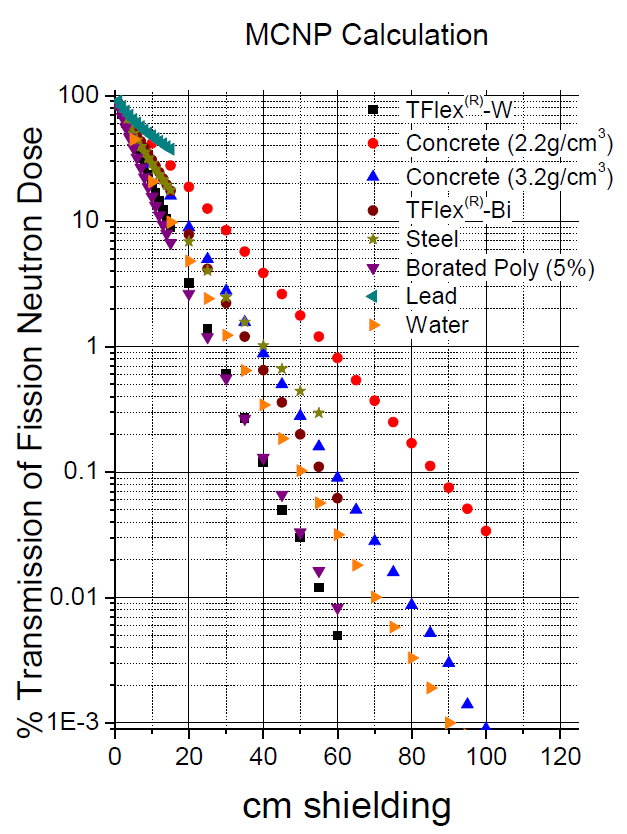Blog
Neutron Radiation: The Concern, Reason, and Solution
December 1, 2016
Executive Summary
Nuclear Power Outfitters (NPO) offers a wide range of materials that can be used to attenuate neutron radiation. In contrast to the high density/high atomic weight element materials used for gamma attenuation (lead, bismuth, tungsten), neutron radiation is most effectively shielded using relatively low density materials with high hydrogen content, such as water or high density polyethylene.
Hydrogen attenuates neutron radiation primarily through scattering interactions which reduce the energy/speed of neutrons (thermalization). Neutrons are effectively thermalized by hydrogen because there is a high probability of interaction between neutrons and hydrogen (high scattering cross section) and because scattering reactions with hydrogen reduce the energy of neutrons more per scattering interaction than other elements.
As the neutrons are thermalized, the probability of neutron interactions with matter increase, including absorption reactions. Additionally, the thermalization and capture of neutrons produces secondary radiation in the form of photons (gamma), secondary neutrons, and other charged particles (alpha, beta, etc.). Neutron shielding material often includes elements with high neutron absorption cross sections, such as boron. Inclusion of boron reduces dose from neutron radiation in two ways: 1) by absorbing thermalized neutrons and 2) by reducing secondary photon production during neutron capture through the 10B(n,α)7Li reaction.
Determination of the most appropriate material(s) for the attenuation of neutron or combined neutron and gamma radiation dose involves the consideration of attenuation properties, chemical and physical compatibility, weight and budget limitations, and potential neutron activation of shielding materials. Nuclear Power Outfitters utilizes over 40 years of experience, experimental attenuation data, and Monte Carlo (MCNP) calculations to help customers choose the most appropriate shielding for their needs. Please contact NPO for examples of NPO neutron and neutron/gamma attenuation projects.
